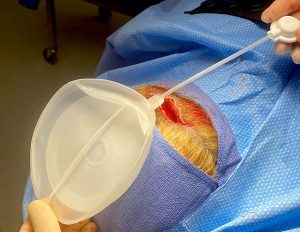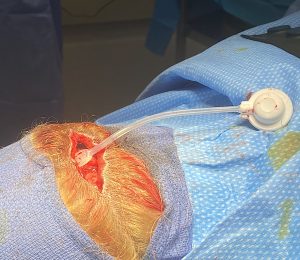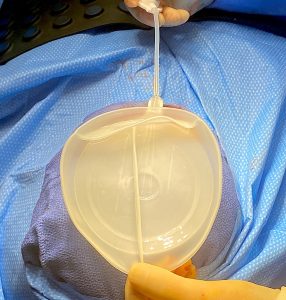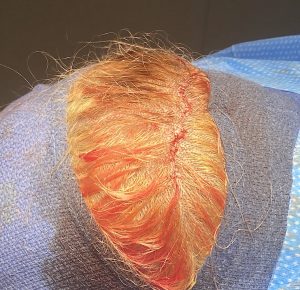The use of a scalp tissue expander is a critical first step in the large skull implant augmentation patient. Since the scalp is a tightly adherent soft tissue envelope that surrounds all five sides of the skull it has a limited ability to stretch to accommodate an expanded cranial contour using an implant underneath it. While scalp stretch is highly variable amongst patients there are multiple external indicators that can indicate how much to little it can be stretched. (skin pigment, hair type) But when it is determined that a first stage scalp stretch is needed a scalp expander device is used. While much of its use is done technically the same as in reconstructive surgery there are some differences in how it is applied in aesthetic skull augmentation surgery.
To review these scalp expander concepts for this application let’s review incision location, then typeof expander used, the rate and end fill of the device as well as its subsequent removal at the time of implant replacement.





Adding volume to the expander is not started until 7 to 10 days after the surgery.The fluid fill regimen is 10cc every 2 to 3 days until the expander reaches at least that of the volume of the designed custom skull implant. As most larger custom skull implants are 200cc+ volume, the end goal is a 250cc fill for every patient. It is easy to see that it would take a minimum of two and a half months to complete this amount of expander fill which is why the second stage implant replacement surgery is scheduled 3 months after the placement of the tissue expander.
Having the tissue expander in and doing the injection fills has little discomfort. In the beginning and until about 2/3s of the way through the process the expander replicates to some degree that of what the implant will do as seen in a female with good hair coverage. As the expander gets more fill it assumes it natural shape (round) which is not the shape of the eventual skull augmentation. But most patients like its appearance anyway.
Because the full volume (250ccs) is way under the maximal fill volume of the expander (550cc) it will eventually feel a bit like a water bed on the head. You will feel the fluid moving back and forth, a strange but not uncomfortable experience. Nonetheless most patients are anxious and happy to tradeoff the expander for the firm bone-like feel of the custom skull implant.
Dr. Barry Eppley
World-Renowned Plastic Surgeon






